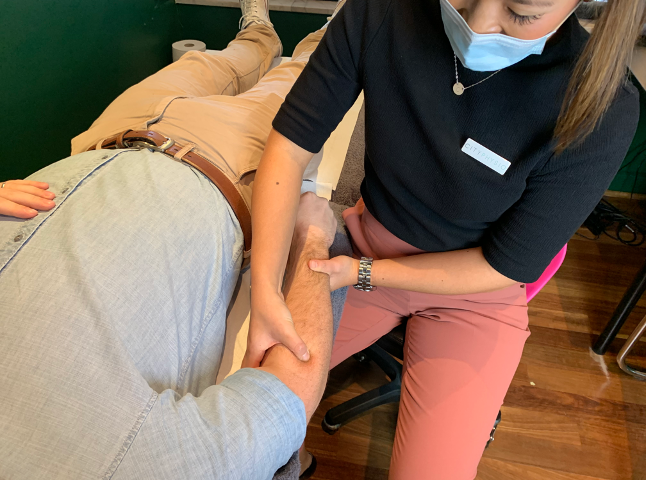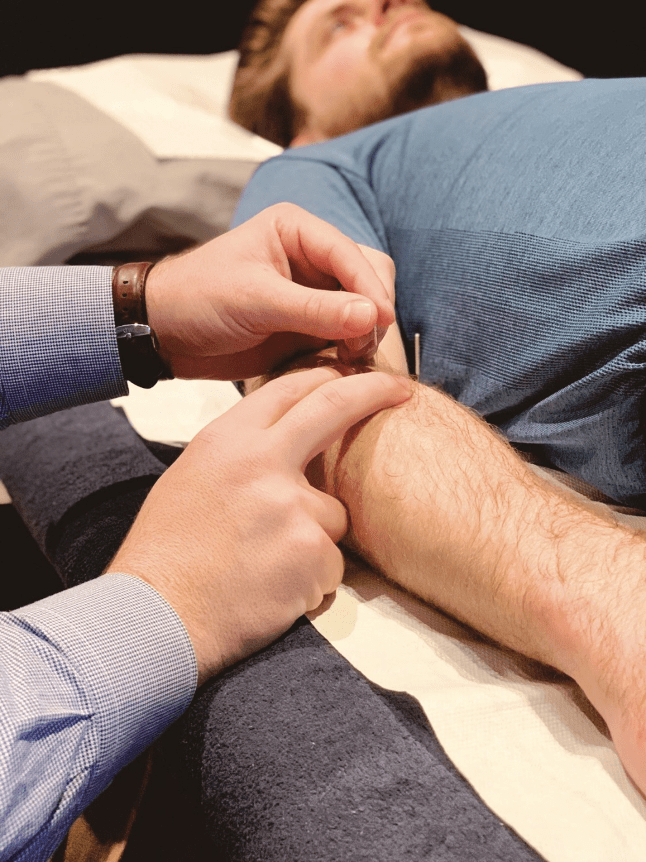Tennis Elbow

Triangular Fibrocartilage Complex
August 27, 2020
De Quervain’s Tenosynovitis
September 4, 2020Tennis Elbow

Tenis Elbow
Persistent pain around the elbow? Unable to lift a weight in the gym? Unable to twist the lid off the jam jar?
You may have tennis elbow, or if you want to get fancy, lateral epicondylitis. It is under the umbrella term of tendon injuries and inflammation. It is defined as an overuse injury secondary to poor biomechanics, weakness and therefore inflammation in the tendon at the attachment point.
Tennis elbow presents with pain or burning around lateral (outside) of the elbow, pain and weakness with gripping and/ or rotatory movements. However, injuries are not always so clear cut. Some injuries present quite differently, depending on the severity there may be referral of pain, heaviness in the arm or swelling.
Like any other injury, a detailed history of behaviour, recent changes or adjustments to an ongoing activity (ie. Work, gym, home activities) and previous incidents, is warranted for a specific diagnosis. Loading or overloading patterns can alter the biomechanics of the body and area of injury. At City Physio, we pride ourselves on a thorough physical and subjective assessment, ensuring we provide you with a detailed explanation and education during and throughout your treatment. Our physical assessment does not just consist of looking and prodding (palpation) around the localised area, but also includes looking at your postural and scapular setting, muscle length and strength. This allows us to provide you with an individualised program and a strict protocol to facilitate gradual strength loading of stabilisers and elf-release and stretch techniques to offload the overloaded muscles.
Elbow Anatomy
Your elbow joint is made up of three bones: the humerus (upper arm bone), radius and ulna (2 bones in the forearm). The bony prominences on each side of the elbow joint are called epicondyles, specifically the lateral epicondyle is the killer when palpated for tennis elbow! To name a few; the group of extensor muscles include extensor carpi radialis longus, extensor carpi radialis brevis, extensor digitorum and extensor digiti minimi. These are involved in wrist extension, abduction, and movement of the fingers.
The thickest of these extensor carpi radialis brevis (ECRB) has an attachment to the lateral epicondyle via the common extensor origin tendon and helps to stabilise the wrist when the elbow is straight. When the ECRB is weakened from overuse, microscopic tears form in tendon where it attaches to the lateral epicondyle resulting in inflammation and pain.
But I don’t play tennis…
Despite the name, tennis elbow does not arise exclusively from playing tennis, it is quite common in other sports such as golf and cricket, and other occupations which involve a lot of repetitive movement such as repeated wrist extension and gripping e.g.trades, desk workers or musicians.
If there is no definitive mechanism, look further up the chain towards the shoulder. A collection of muscles, tendons and ligaments help stabilise the shoulder joint. In the modern day, we see a lot of desk jockeys hunched over the computer, prolonged hours on phones, mice and keyboards which forces the shoulder to sit anteriorly. This anterior or forward tilt of the shoulder and scapular (shoulder blade) causes all sorts of altered loading patterns down the arm. Postural correction and scapular retraining, targeting muscles such as the serratus anterior, low and middle traps and rhomboids, can therefore help to decrease load on the rest of the arm.

So, what can I do?
Here at City Physio, we look at the injury as a whole picture. We address the impairments and then target our treatment to help to achieve your goals. Treatment plan for a tendinopathy include an evidence-based tendinopathy protocol for the injury. The main goal is to reduce pain and restore function with a strict protocol to develop the tendon’s ability to tolerate loads and strength through the muscles in the area. Tendon loading through exercises has been shown to positively affect the tendon matrix, reduce pain perception and improve function. Immediate symptom management can lead to better recovery and improved performance.
Looking at the bigger picture such as changing your behavioural habits (e.g. Grip technique in a golfing club or improved desk ergonomics) and/or correcting posture and strengthening postural stabilisers can help to unload the muscles in the forearm.
Unfortunately, symptoms of pain and discomfort only represent a small amount of the problem, it is the dysfunction we need to address. If you think you have tennis elbow, pop into City Physio in Martin place and let’s find a more permanent solution to your pain and recovery.

